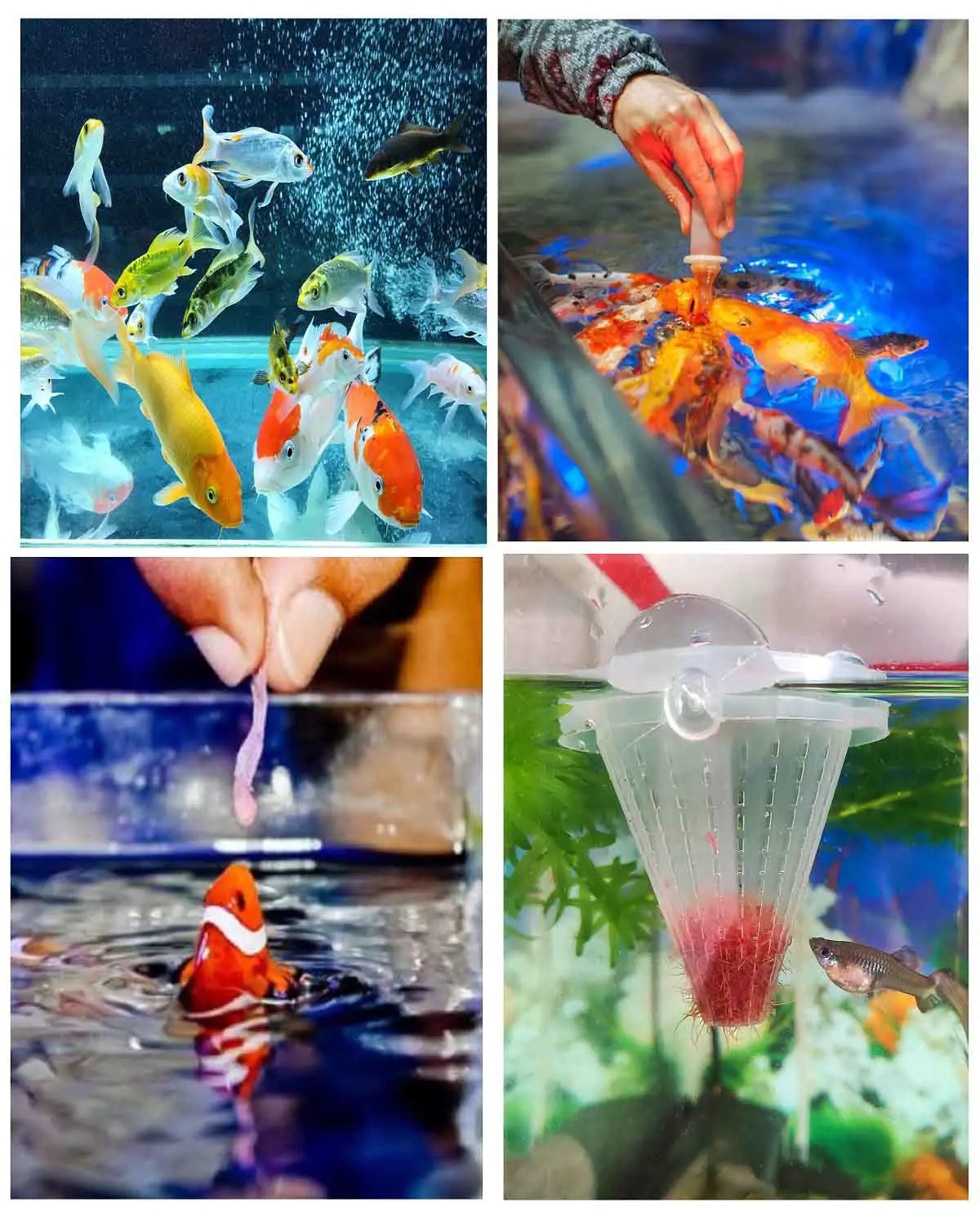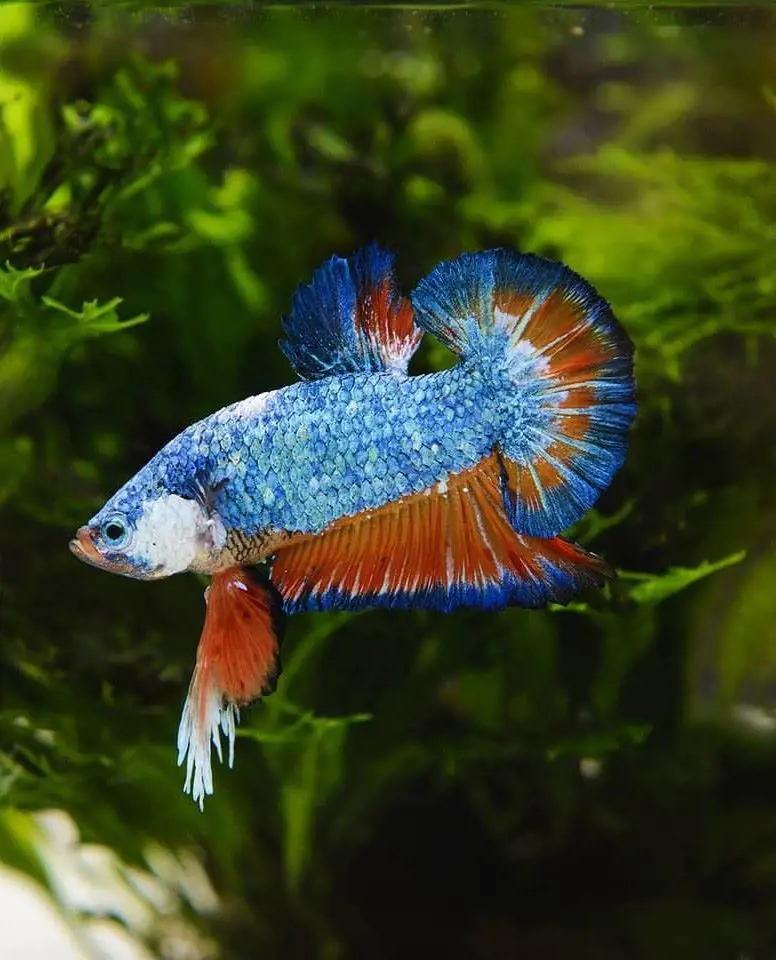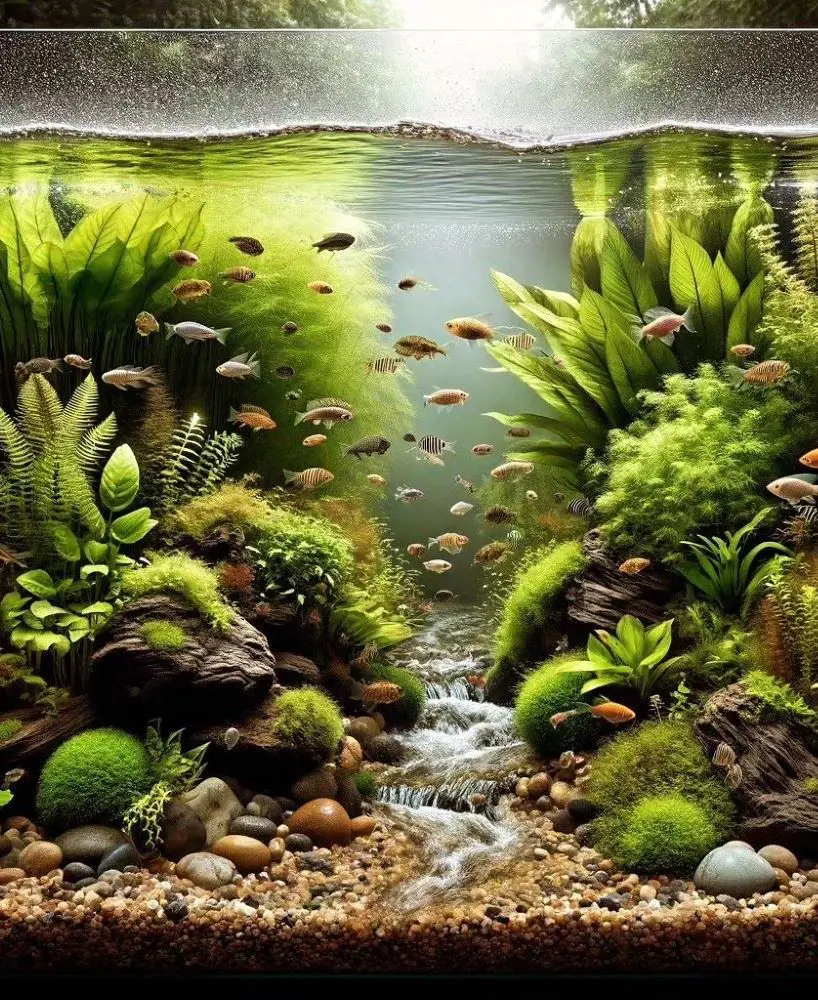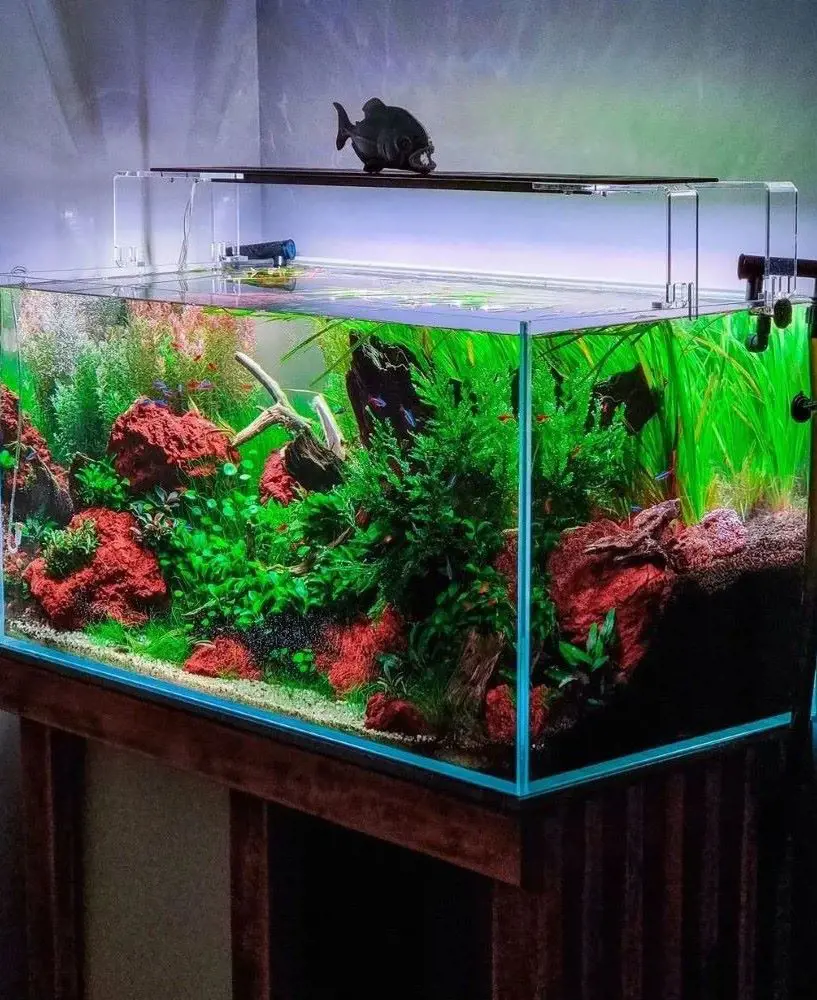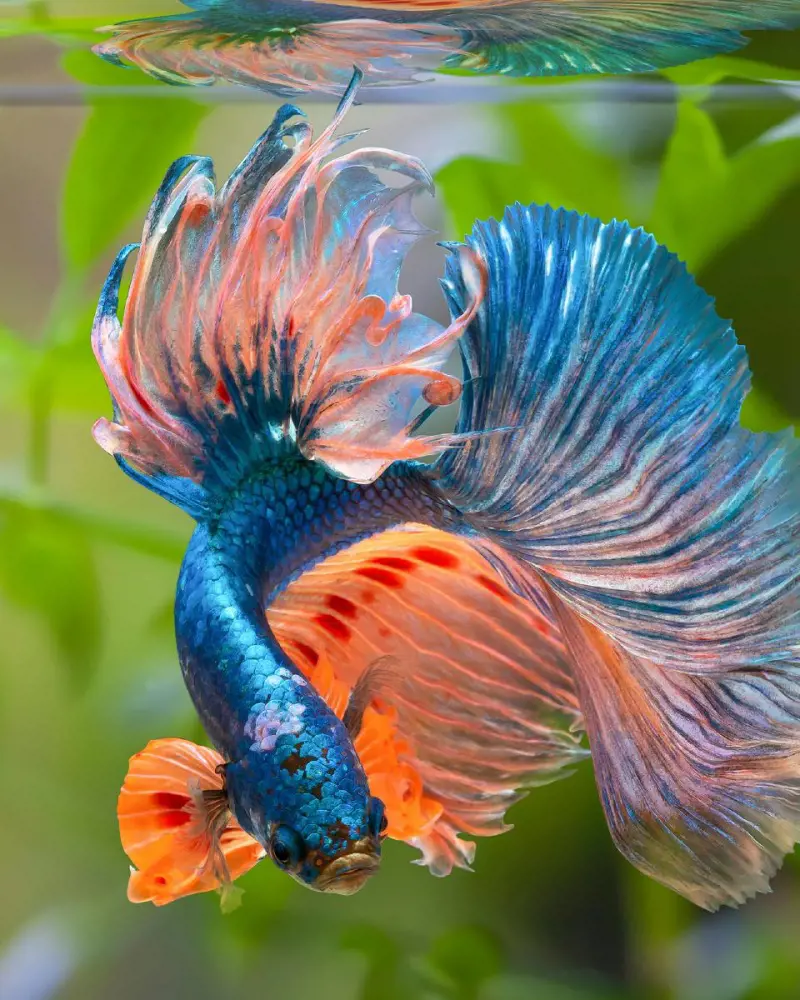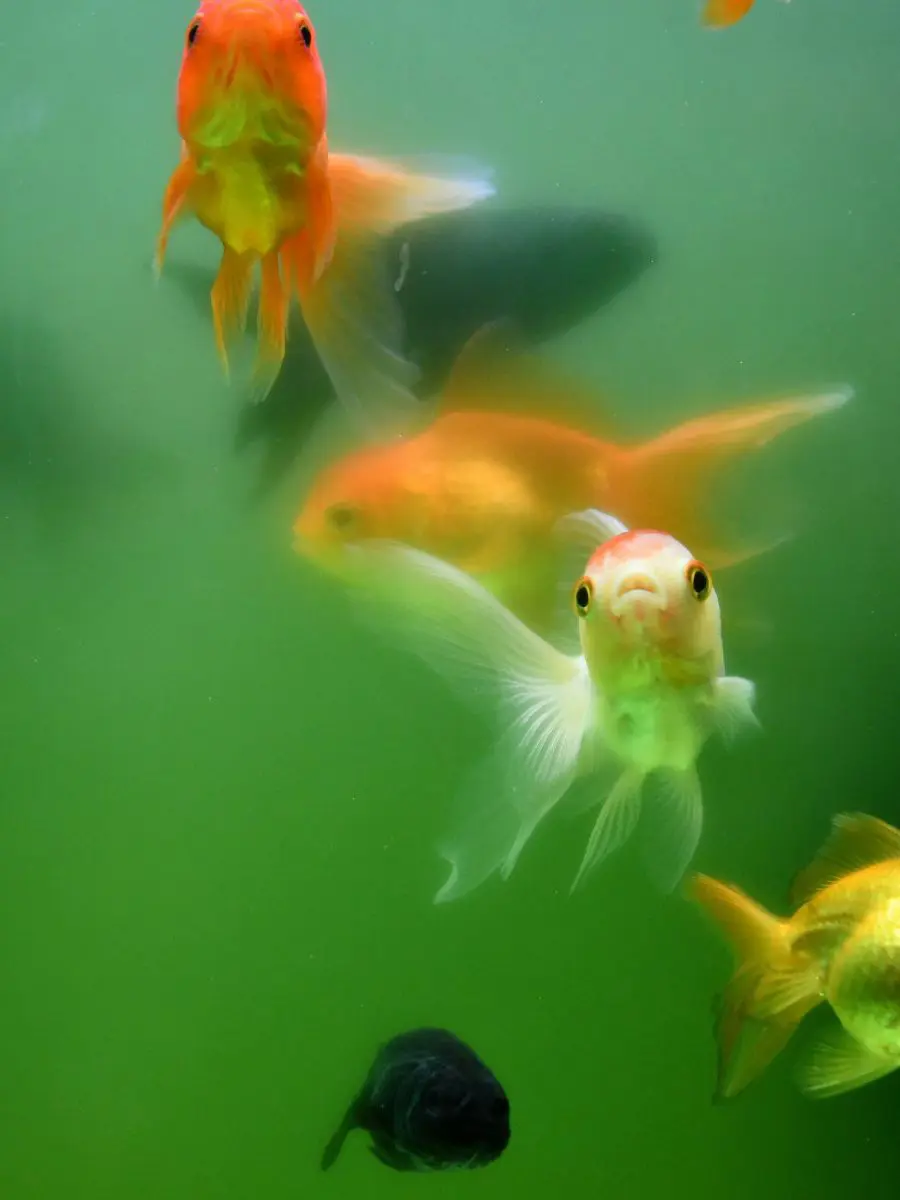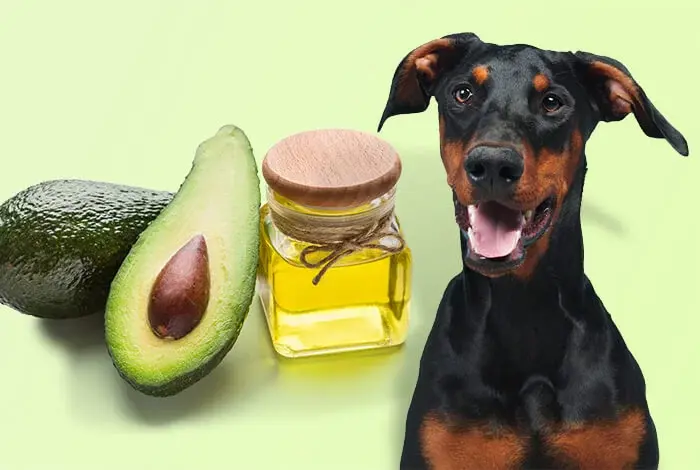20 Best Pond Fish For Your Home
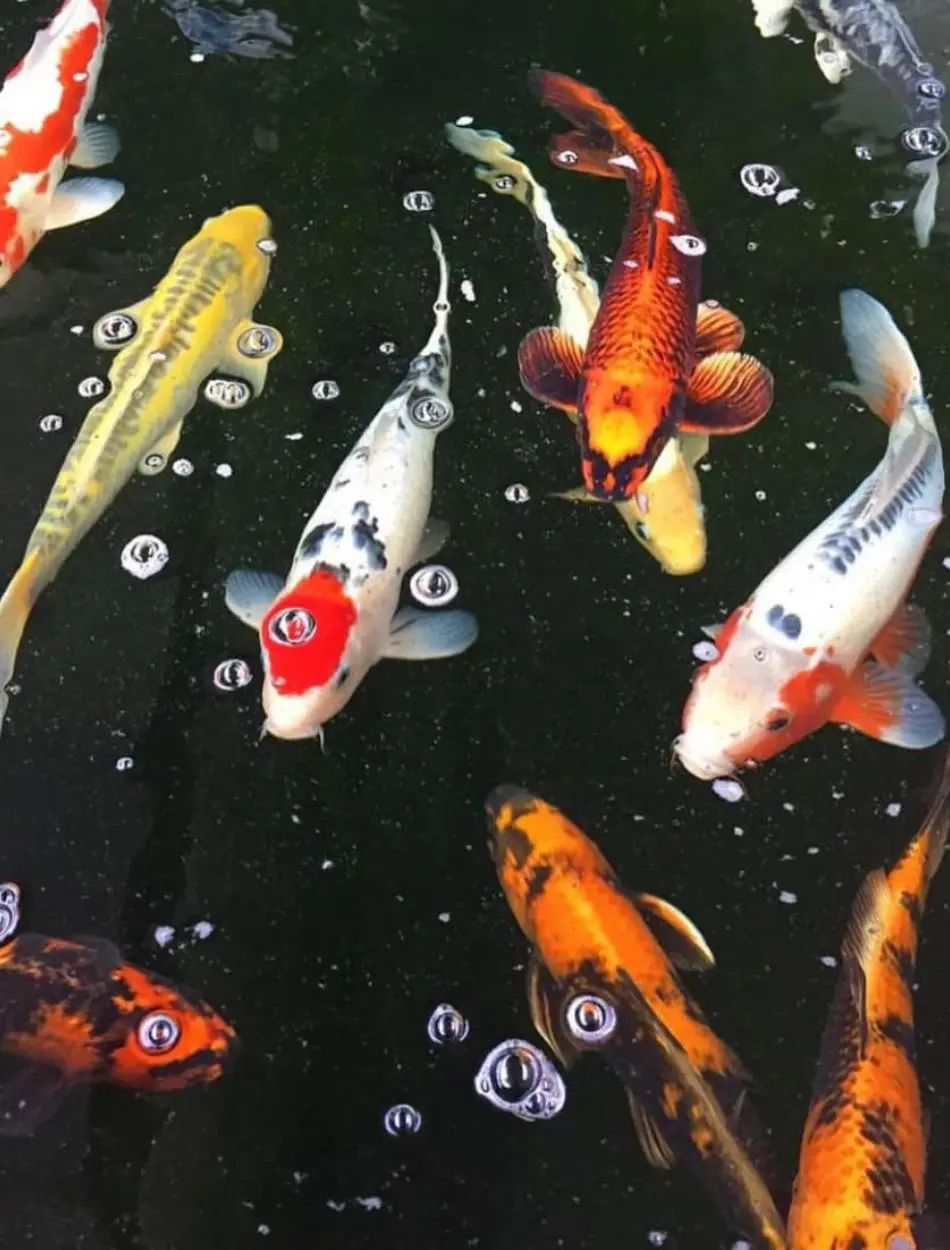
Pond fish are significant contributors to the pond ecosystem that add vibrance, beauty, and aesthetic appeal to the pond. They can be found in wide varieties ranging from koi to goldfish, and Mosquito fish.
These fish come in various shapes, sizes, and colors that bring elegance and a harmonious aquatic environment. If you are looking for fish to add to your pond, there are various factors to consider such as climate, pond size, water quality, and compatibility.
1. Koi Fish
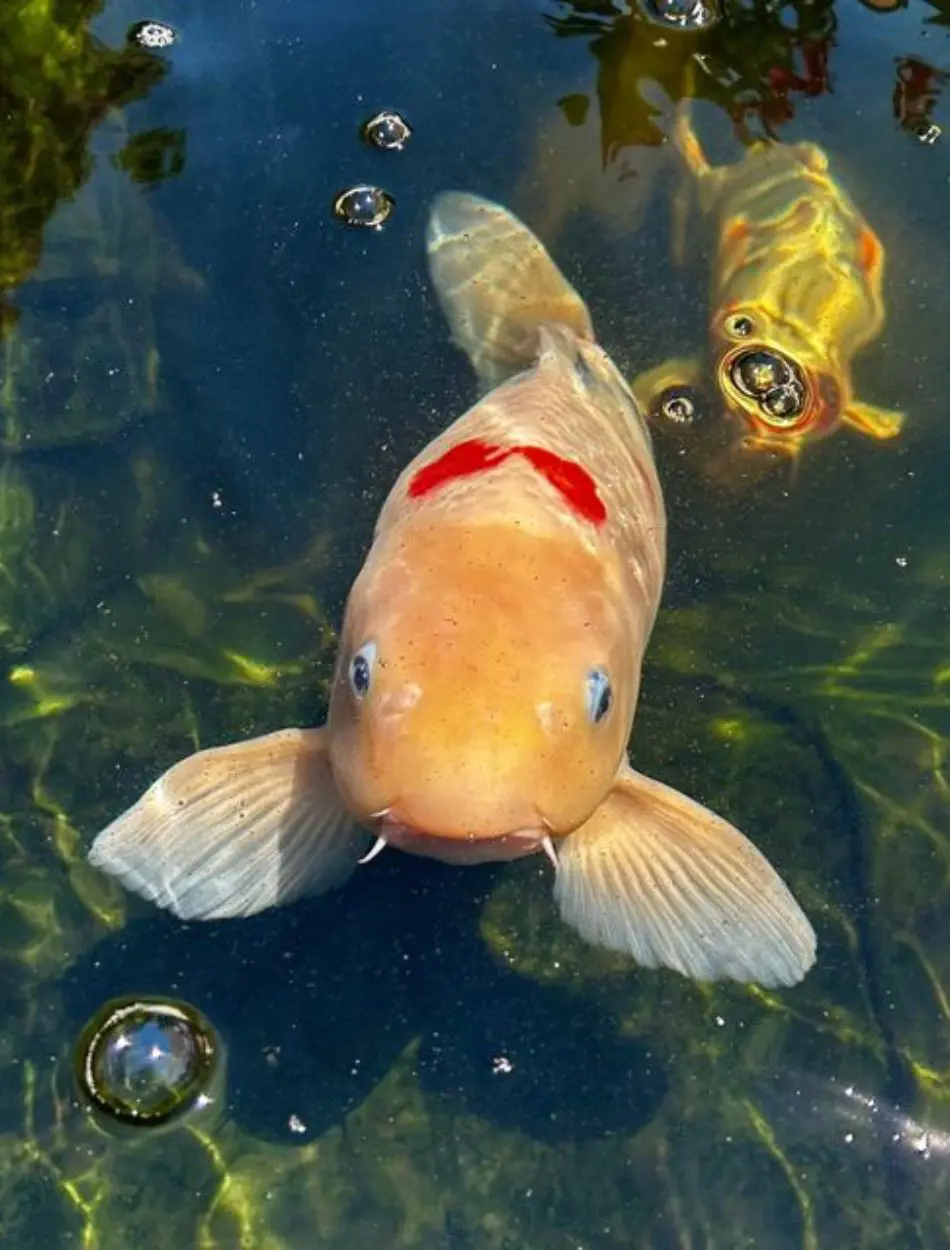
Koi fish is a well-known colorful and vibrant fish species that is very beginner-friendly and easy to take care of. They can be found in various colors such as white, black, red, yellow, blue, and cream with solid and mottle patterns.
Koi are active fish that thrive in well-maintained, clean, oxygenated water. It is very important to note that the ponds of these fish should have at least 3 feet for stable temperature and protection from predators. The best tank mates for these fish are goldfish, Shubunkin, and Orfe.
Koi fish are omnivorous and can be fed commercial pellets, lettuce, peas, watermelon, insects, worms, algae, and plant material. To maintain a healthy environment for them, make sure that the pond is well maintained, water quality is monitored, and they are fed high-quality diets.
2. Goldfish
Goldfish is a well-known ornamental fish that can be found in various color ranges and patterns, and diverse body shapes. They have body shapes such as streamlined, egg-shaped, or with flowing fins and tails.
Goldfish are active fish that are social, peaceful, and can live in groups. They are adaptable to both aquariums as well as outdoor ponds. However, it is important to keep them in well-oxygenated, clean water with plenty of swim space.
If you are planning to add them to your pond, you can feed them commercial flakes, blanched peas, spinach, lettuce, brine shrimp, bloodworms, daphnia, algae, and plant materials. They thrive well with pond mates such as Koi, Shubunkin, and Orde.
3. Shubunkin
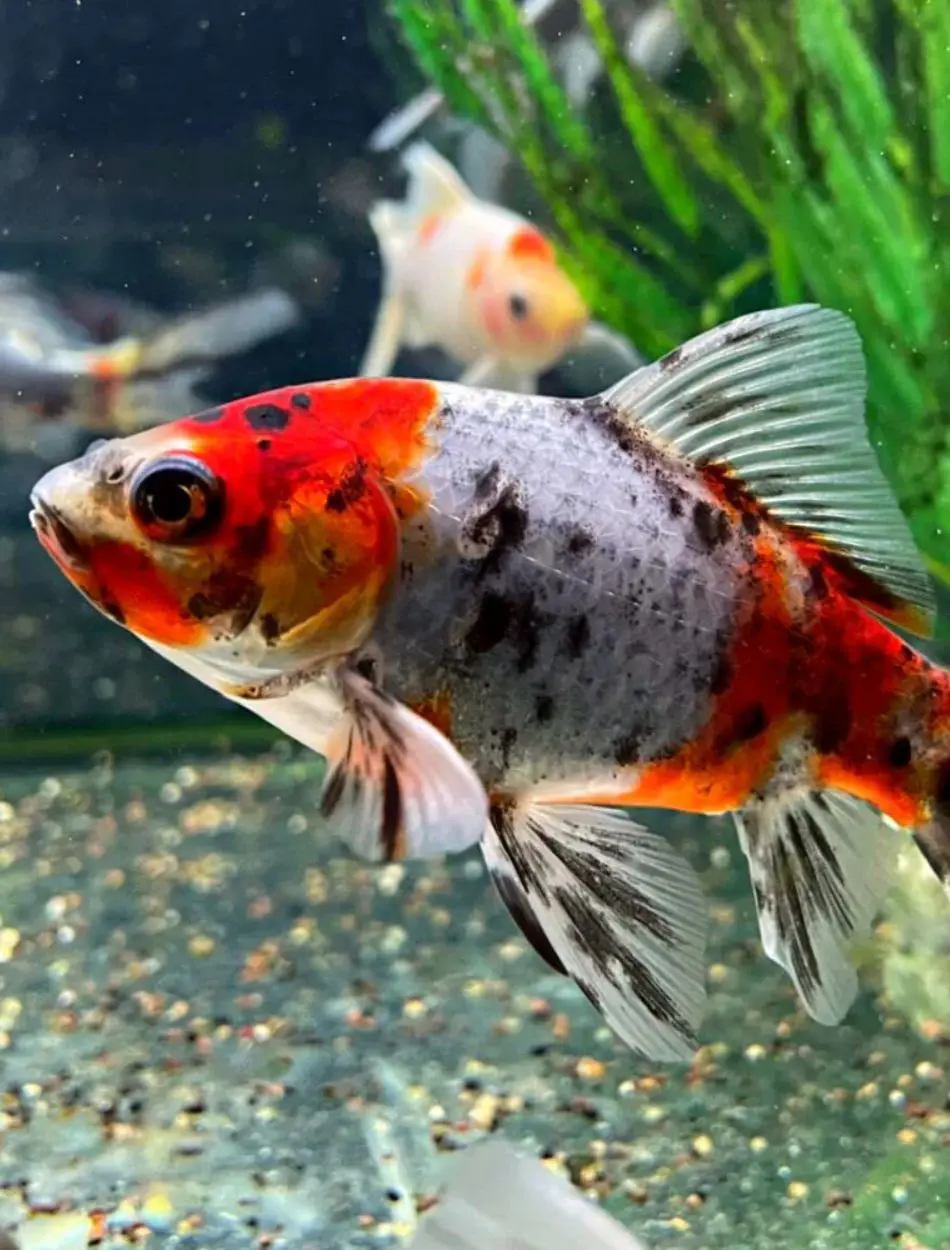
Shubunkin is a single-tailed fish well-known for its calico pattern and long fins. One of the most attractive features of this fish is its pearl-like sheen of its scale.
These fish have a blue-gray color with freckles of red, orange, and black with slender, elongated bodies. They are active fish that are hardy and adaptable, which makes them best for both beginners and experienced aquarists.
They can survive in both aquariums and ponds with spacious environments to swim in. It should be noted to keep them in ponds with at least 2-3 feet for stable temperature and protection from predators. You can feed them vegetables, live or frozen foods, algae, and plant materials.
Their aesthetic appeal, along with their active and social behavior adds a very lively environment to your pond.
4. Mosquito Fish
Mosquito fish is a small, grayish-brown, hardy fish that is mostly kept in backyard ponds to control mosquito populations. One of the distinct features of Mosquito Fish is their upturned mouth. They are grayish or olive in color, with a translucent look.
The body of a Mosquito fish is streamlined with a rounded tail and slightly upturned mouth. These fish show aggressive feeding habits and can be territorial, so, they should be kept with other tank mates after considering size compatibility, behavioral compatibility, tank size, and water conditions.
Their diet consists of mosquito larvae to help control the mosquito populations. However, they also eat commercial flakes, live or frozen food, and algae.
5. Three-Spined Stickleback
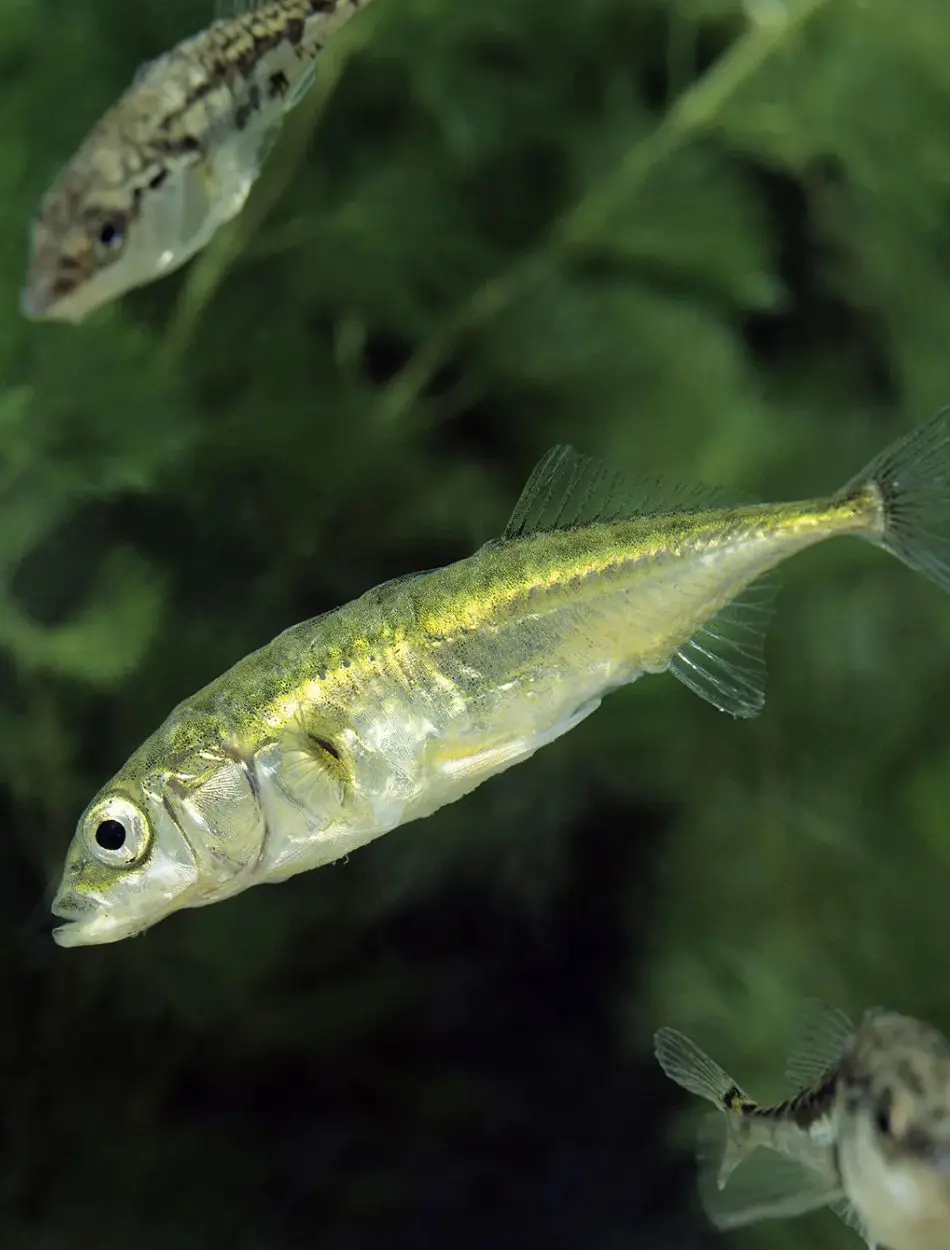
The Three-Spinned Stickleback, scientifically known as Gasterosteus aculeatus, is a silvery or greenish-colored fish known for its distinctive spines and adaptable nature. During the breeding season, males also develop bright colors to attract females like red, blue, or green.
These fish have three sharp spines that provide a defense mechanism against predators. They have an elongated body that is somewhat compressed, with a small head and forked tail.
While these plants are mostly peaceful, they can be territorial during the breeding season. One of the interesting behaviors of this fish is that the male fish build and defend nests to attract females.
Three-spinned Stickleback can survive in various aquatic environments such as freshwater and brackish water. Their primary diet is small invertebrates such as insects, larvae, and zooplankton, but, they also consume algae. They can be kept with small Danios, Guppies, Platies, and Endler's Livebearers.
6. Golden Orfe
Golden Orfe is a beautiful fish that showcases its vibrant gold color and active nature. They have bright golden-yellow bodies with a slight orange or copper hue that is streamlined and elongated.
These fish are best suited for large ponds due to their active swimming habits. They thrive well in well-oxygenated water that consists of a good filtration system and cool temperature. Like many other fish, they eat live or frozen food, vegetables, algae, and commercial pallets.
They are low-maintenance, peaceful creatures that can be kept with a variety of fish such as Koi, Goldfish, Shubunkin, and small to medium pond fish
7. Chinese High-Fin Banded Shark
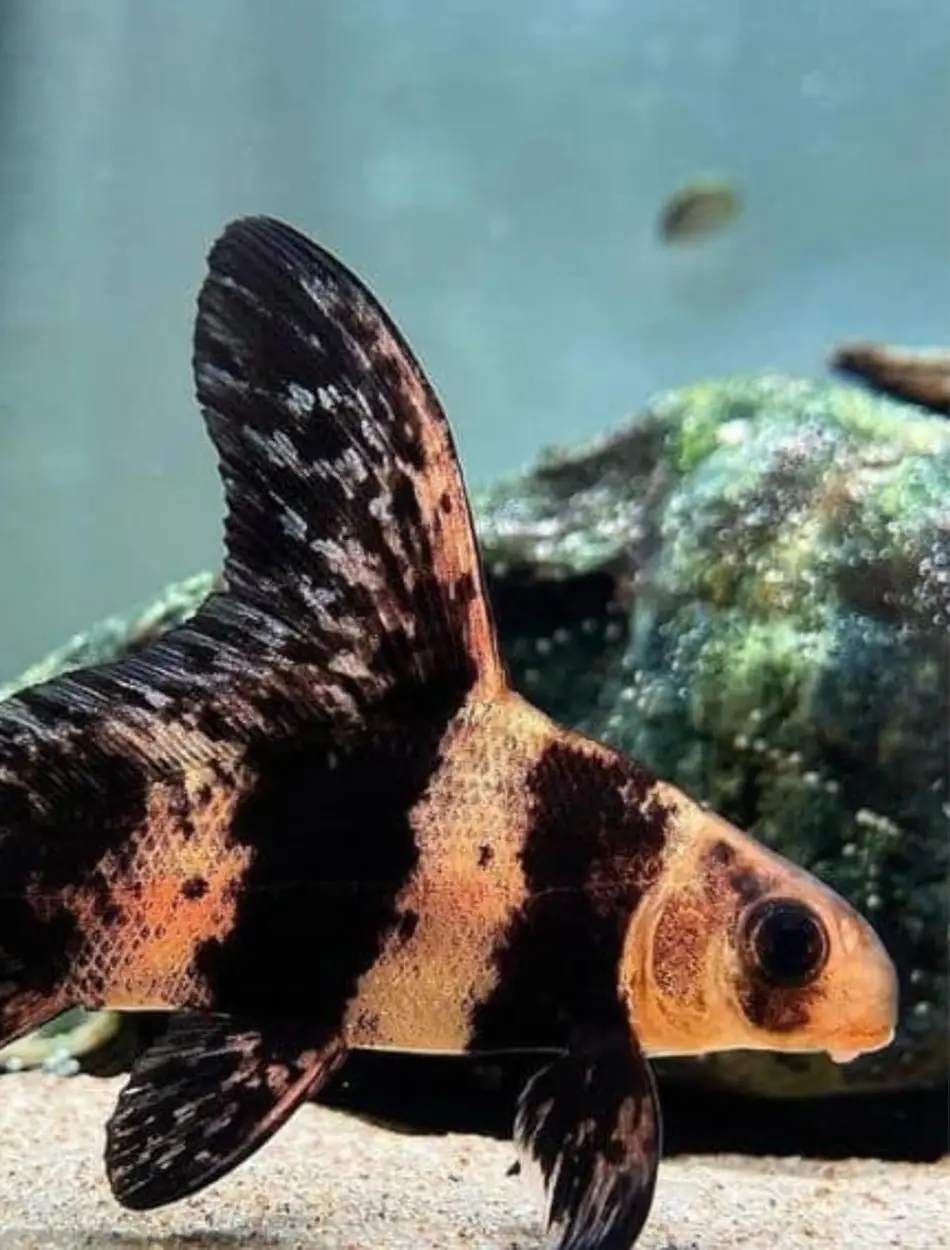
The Chinese High-Fin Banded Shark is an attractive freshwater species famous for its size and appearance. It has a long, streamlined body, high dorsal fin, and striking vertical stripes and does well in large aquariums and outdoor ponds.
These fish can reach up to 36-40 inches in length, although some reach even more size. They have a silvery or light gray body distinguished by vertical black stripes.
Known for its active, social, and strong swimming abilities, these fish can also be territorial. Thus, they should be kept with other large, peaceful fish. They should be fed worms, shrimp, small fish, algae, and supplemental foods if necessary.
8. Golden Tench
Golden Tech, also known as Doctor Fish, is a fish species found in still, muddy waters. They have a robust, golden-yellow, elongated body with a slightly rounded shape.
They are well-known for their peaceful and calm behavior and, thus, can be kept with other fish such as Koi, Goldfish, Shubunkin, and other bottom-dwellers. Golden Tench is a bottom-dweller fish that thrives well in both aquariums and outdoor ponds.
You can feed them high-quality flakes, live or frozen food, algae, small invertebrates, and waste material in the pond or tank.
9. Bluegill
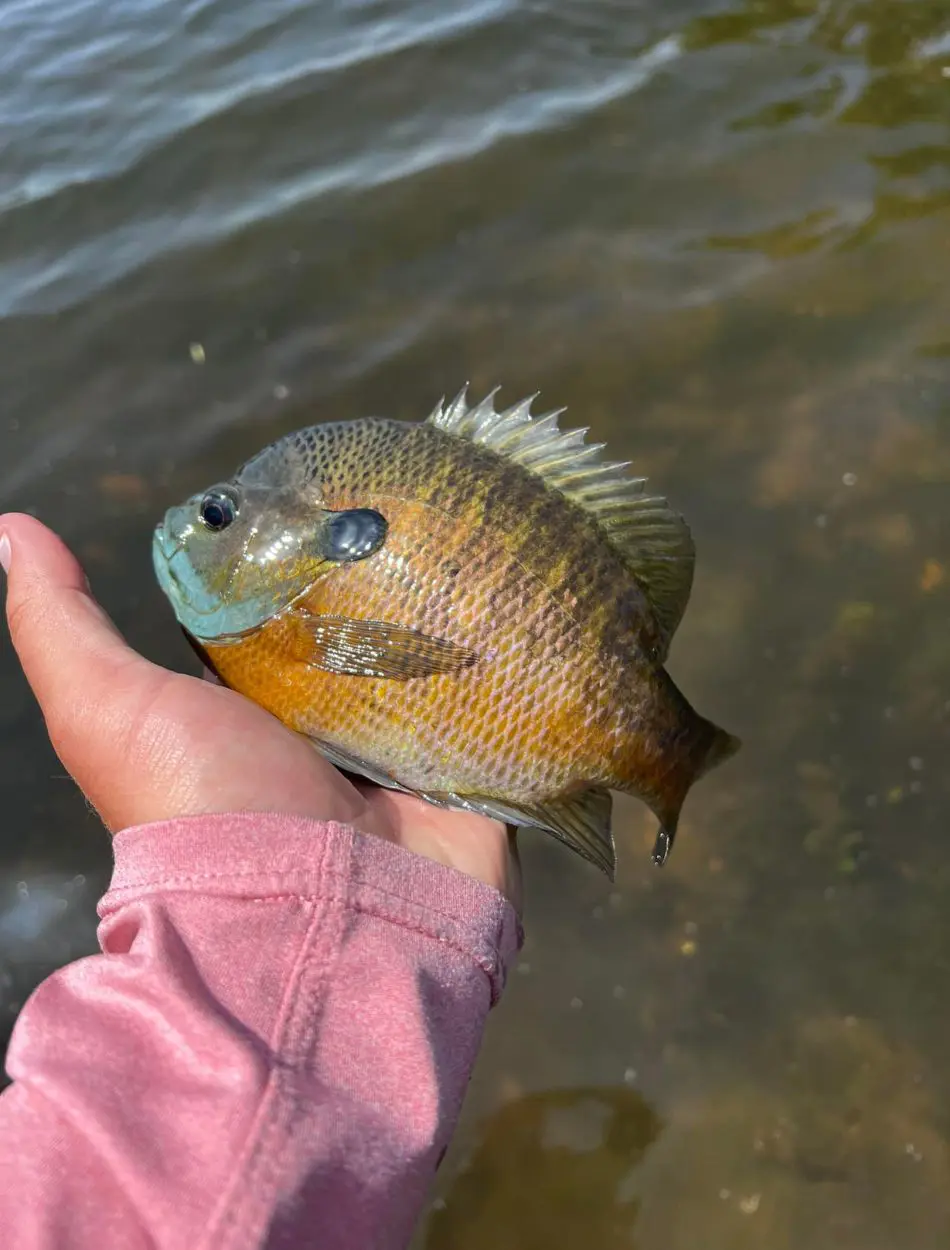
The Bluegill is a colorful and attractive fish that adds a vibrance to the ponds and large aquariums. They have flattened, round bodies with small mouths and large eyes. These fish can be distinguished by their dark blue or black spot found in the base of the dorsal fin, a blue or greenish sheen on the body, and a yellow or orange belly.
Blugeiils are active fish that can show aggressive feeding habits. They eat invertebrates, small fish, algae, and fish pellets. They are easy to take care of if provided with high water quality and warm temperatures. They are well-suited to other sunfish species, catfish, Koi, and Goldfish.
10. Smallmouth Bass
If you have a very large pond and are receptive to exciting challenges, Smallmouth Bass might be a perfect match for you. These fish have elongated bodies found in bronze or olive-brown colors, slightly flattened heads, and large mouths that extend past their eyes. Moreover, they also have darker vertical stripes running along the sides of their body.
Smallmouth Bass are aggressive creatures and have fighting skills. They can adapt to various environments like lakes and rivers. Their diet consists of insects, crayfish, small fish, and artificial lures. Make sure to keep them with fish with less aggression and similar needs such as other bass species, catfish, and large crayfish.
11. Walleye
The walleye is a freshwater fish known for its size and taste. They have an elongated, streamlined body with a large, slightly pointed head. Walleye has a pale, silvery-green body that contains dark vertical spots along the sides.
One well-known fact about this creature is its nocturnal and crepuscular feeding habits. Moreover, they are also aggressive predators that can be kept with other fish with similar needs or tolerate their predatory nature such as catfish, large crayfish, or other large predators such as Northern Pike or Muskie.
Walleye's primary food is smaller fish such as minnows and shad. They also consume aquatic insects, crustaceans, and artificial lures like jogs, crankbaits, and spinnerbaits.
12. Channel Catfish
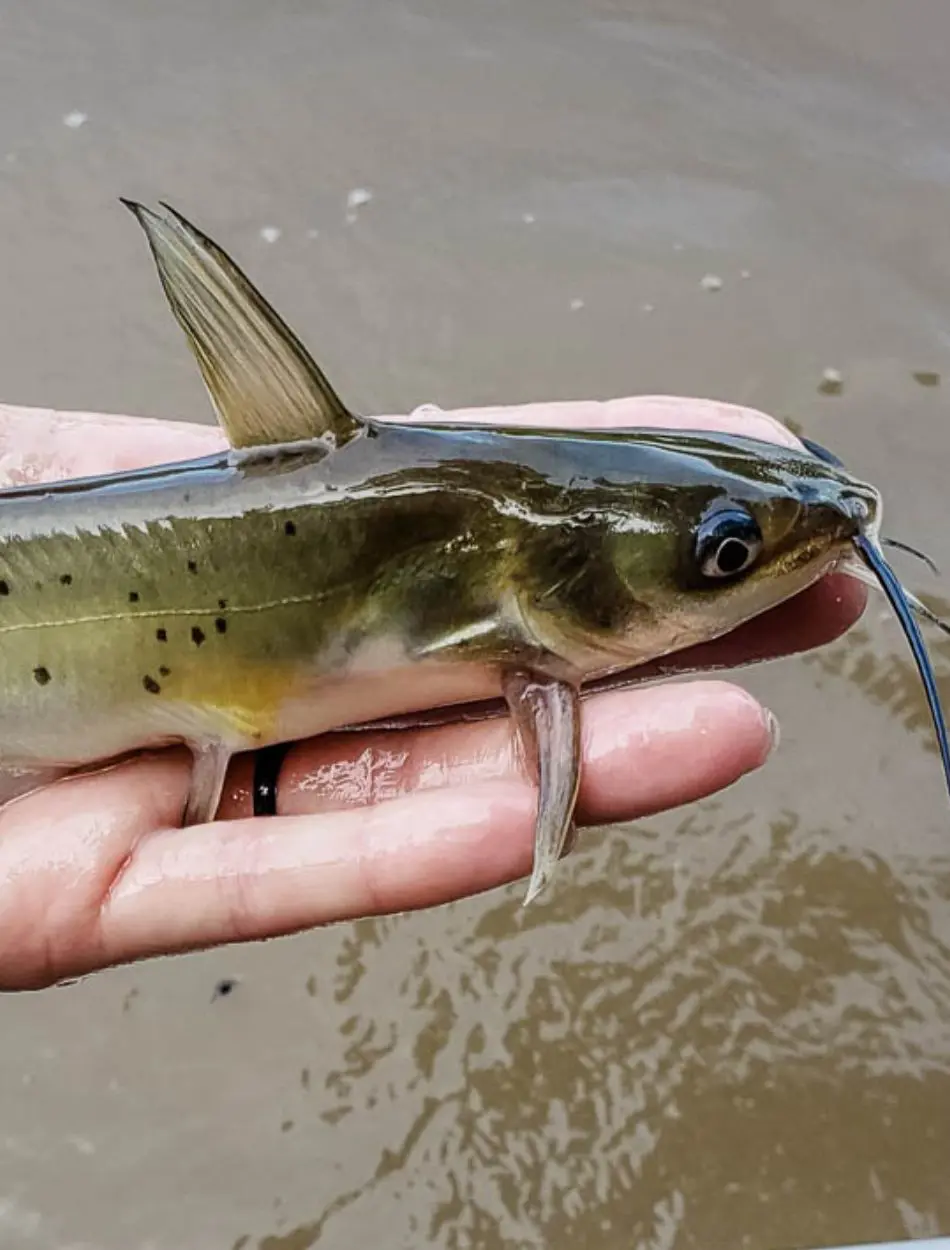
Channel Catfish is a popular freshwater fish that is known for its contribution to sport fishing and aquaculture. They have a smooth, grayish olive-green body along with a light belly and small black spots on their sides.
These fish have an elongated body with a broad head and visible barbels around their mouth. Channel Catfish shows nocturnal feeding habits and bottom-dwelling nature. They can be very aggressive during feeding times, therefore, should be placed with fish that can handle their behavior. You can feed them insects, worms, crustaceans, small fish, plants, and catfish pellets.
13. Sturgeon
Sturgeon is a unique, ancient freshwater fish famous for its size, unique appearance, and long lifespan. These fish have grayish or olive-brown bodies with light underside. Their scaly, armor-like appearance with bony plates makes them stand out from other fish.
Sturgeons have streamlined, elongated bodies and a large flattened head with barbels near their mouth. They use their barbels to detect food in the substrate.
Known for their size, these fish are bottom-dwelling, slow-moving fish that show nocturnal feeding patterns. They thrive on foods such as worms, crustaceans, insect larvae, small fish, and algae. Sturgeon survives well with fish such as koi, large goldfish, catfish, and other large bottom-dwellers.
14. Hi-Fin Banded Shark
The Chinese High-Finbanded Shark is an appealing freshwater species that requires a well-maintained, cool-water environment with good water circulation and quality.
These fish have attractive black-and-white banded patterns, however, with age, the patterns become less defined, and their coloration shifts to a more uniform brownish-gray. Its body shape is deep and laterally compressed with a dorsal fin.
Chinese high-fin banded sharks are bottom-dwelling fish that are peaceful, active swimmers who love to feed on algae. They also eat invertebrate and commercial food such as pellets, algae wafers, and fresh vegetables. They can coexist with fish such as goldfish, koi, and other coldwater fish.
15. Sarasa Comet
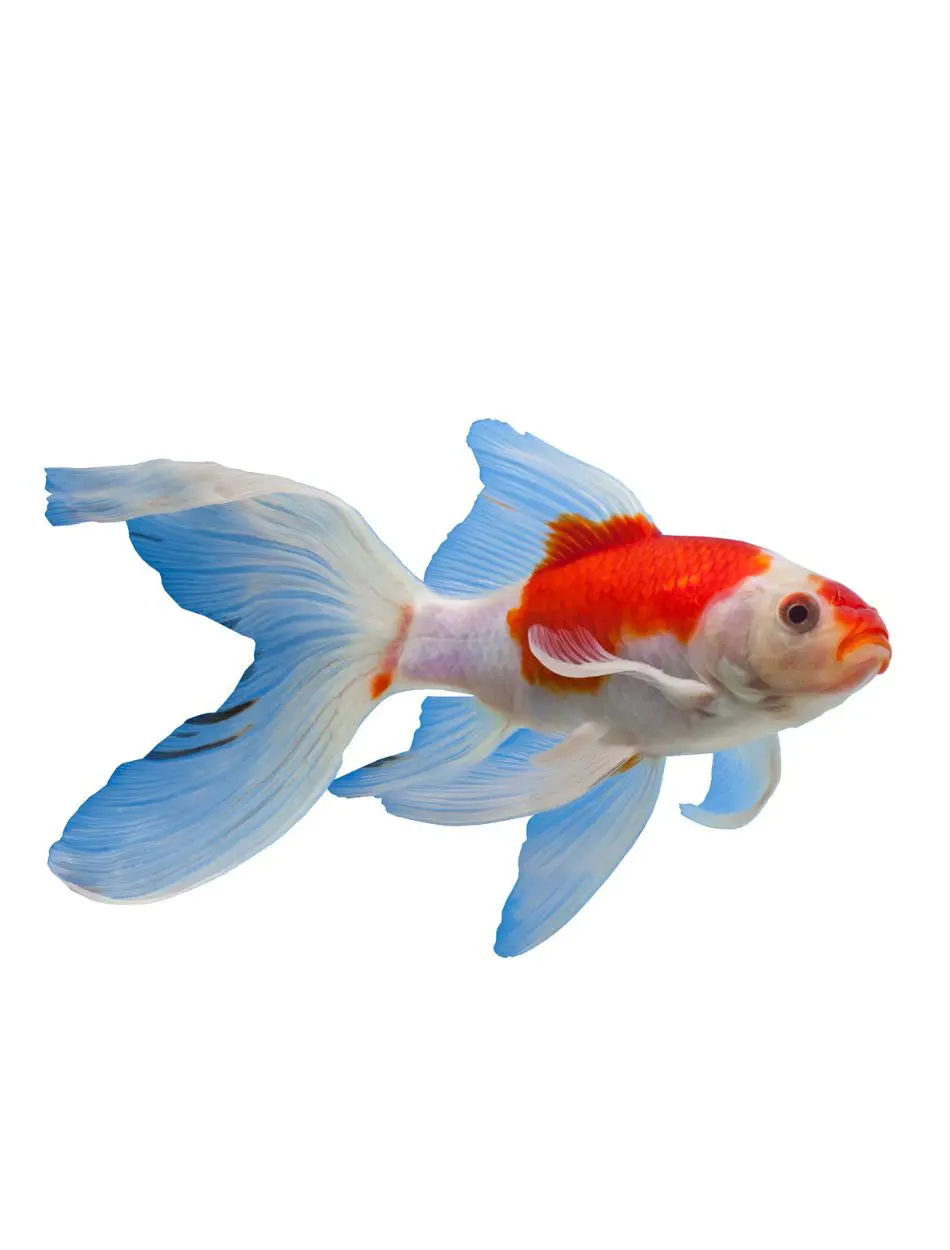
The Sarasa Comet is a graceful freshwater fish that has an extraordinary red body contrasted with white patches. They have longer and more delicate fins than that of standard goldfish.
This is an active, social, and peaceful pond fish that loves to swim around their environment and thrives in groups. They can survive in both ponds and aquariums if the temperature is well-maintained. They love to eat flakes, vegetables, and live or frozen food.
When keeping them in a pond or a tank, you can pair them with koi, other goldfish, and other coldwater fish. By providing these suitable conditions, they can add elegance and aesthetic appeal to your pond.
16. Guppy
Guppy is a classic fish for ponds that originated in tropical pools in South America and the Caribbean islands. They can be found in various colors including shades of red, blue, green, yellow, and orange.
Guppies have slender, streamlined bodies along with large, fan-like caudal fins. The male species are usually more colorful and have more elaborate fin shapes and patterns. Due to their lively and peaceful behavior, they can be paired with fish such as tetras, corydoras, mollies, and rasboras.
These pond fish are omnivorous creatures that eat flakes and pellets, live or frozen food, and finely chopped vegetables like spinach or zucchini.
17. Zebra Danio
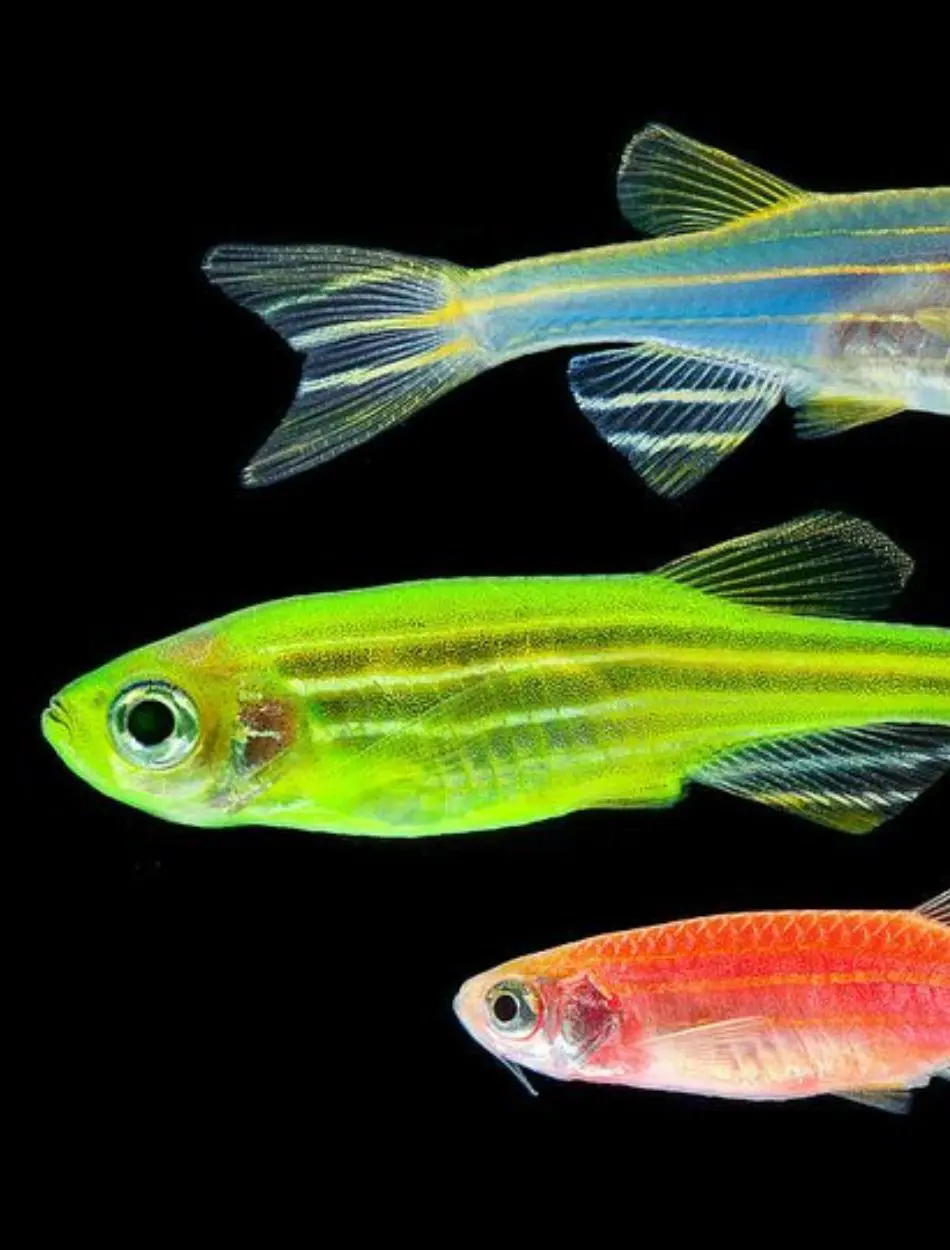
Zebra Danio is a small, active, and durable fish that is very easy to take care of. They can be easily recognized by their striped, black-and-white zebra-patterned bodies.
Like most fish, they have streamlined, slender bodies with short, translucent fins. Their famous and attractive zebra-like pattern runs from their gill covers to the tail. Due to their active behavior, they are suggested to keep in a group of at least six.
Zebra Danio is an omnivorous pond fish that has a varied diet consisting of pellets, live or frozen food, and vegetables. They can be kept along with tetras, corydoras, mollies, platies, and guppies.
18. Bluegill
Bluegill, also known as blue sunfish, bluegill sunfish, copperheads, copper bellies, and bluegill bream is a well-known game fish that has been introduced into various freshwater habitats. They have distinctive colors with round and flattened body shapes.
They are named Bluegill after the blue or purple hue on their gill covers. These fish have laterally compressed, round bodies along with a small mouth and a unique black spot at the base of the dorsal fin.
While these fish are quite social and curious, they can sometimes be aggressive, especially during spawning season. They can survive well in ponds, lakes, and rivers and feed on insects, larvae, small fish, algae, and pellets.
If you are planning to add a Bluegill to your pond, you can pair them with other sunfish, bass, catfish, and perch.
19. Pond Loach
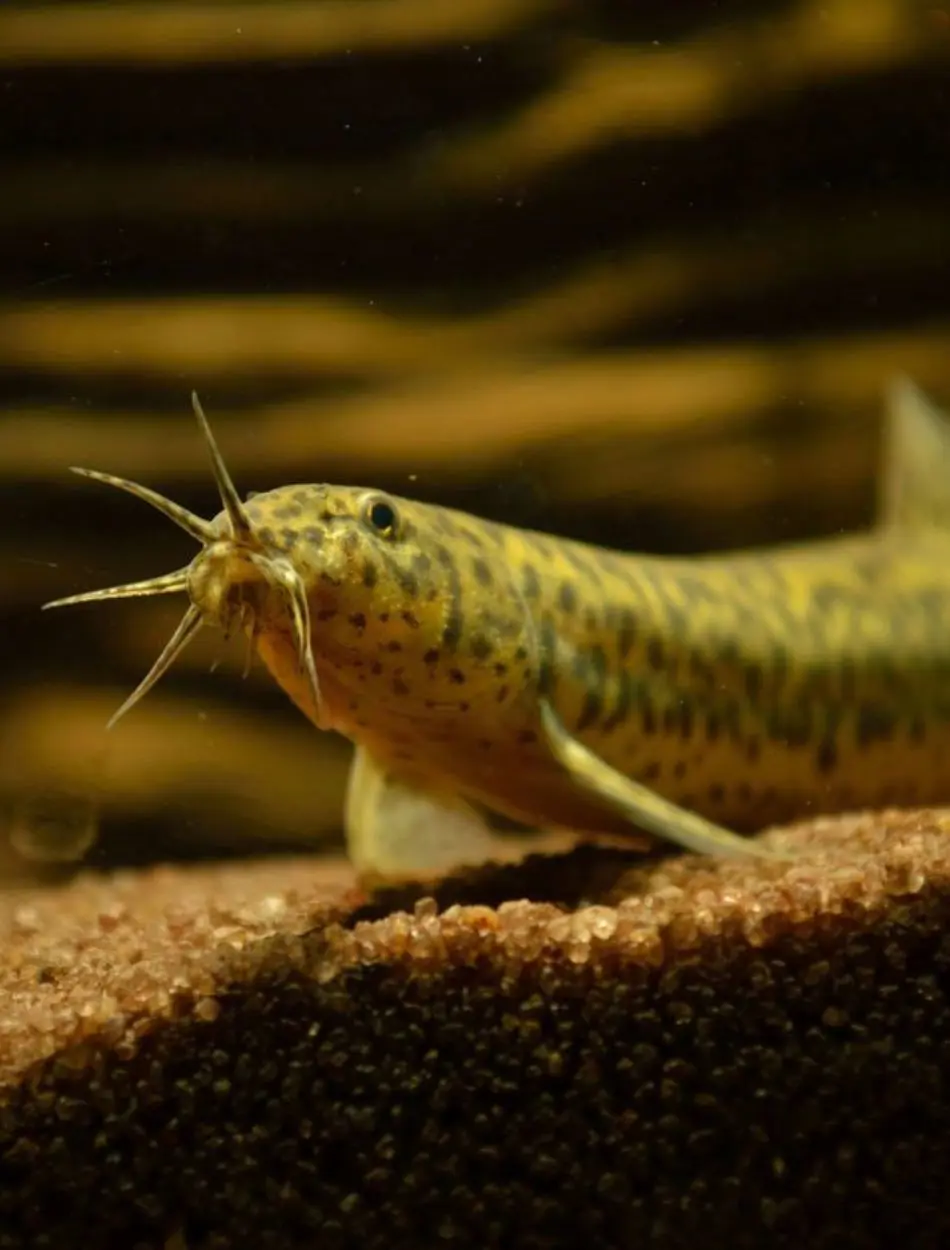
Pond Loach is an active, social, and curious fish that is known for its elongated, eel-like body. They are also known as Weather Loaches or Dojo Loaches and are usually light brown or olive with dark spots along their bodies.
Pond loaches have barbels around their mouths to help them sense food in murky water. These fish become more active when atmospheric pressure changes, as they are well-known for their weather-predicting capability.
Their diet consists of flakes, live or frozen food, and vegetables. Pond loaches are easy to care for and can be kept with other tank mates such as goldfish, koi, other loaches, and coldwater fish.
20. Swordtail
Swordtail is a common freshwater fish that is beginner-friendly and gets along with various other fish in well-maintained environments. They can be found in various colors like red, green, orange, and black.
Swordtail fish are known for having streamlined bodies with a sword-like extension on the lower part of the male's tail fin. They are active, social fish that do well with tetras, corydoras, mollies, guppies, and danios.
These fish are calm and peaceful, however, the males can be territorial, especially during breeding. Their diet consists of pellets, live or frozen food, and vegetables. These fish are easy to care for and bring vibrancy and beauty to your pond.
Top Lists

